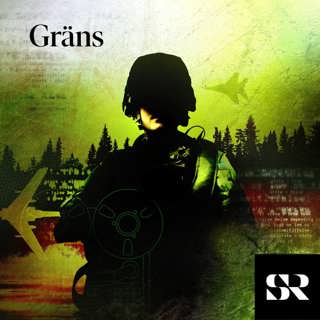
On the Ground in Kenosha
This episode contains strong language.The shooting of Jacob Blake, a Black father from Kenosha, Wis., by a white police officer has reverberated through the city, fueling protests and unrest. There have been marches and demonstrations, as well as instances of destruction: businesses and property set alight, fireworks launched at the police.On Tuesday night, a group of armed men, who claimed to be there to protect the community, arrived. Three protesters were shot, two of whom died. Kyle Rittenhouse, a white 17-year-old from Illinois, is suspected of being the gunman.We speak with Julie Bosman, a national correspondent for The Times, about what is happening in her hometown.Guest: Julie Bosman, a national correspondent for The New York Times.For more information on today’s episode, visit nytimes.com/thedaily Background reading: Kenosha has become the latest flash point in a season of unrest that began with the killing of George Floyd.Kyle Rittenhouse, 17, is facing a charge of first-degree intentional homicide. The Times’s visual investigation team tracked his movements on Tuesday night.The turmoil in Wisconsin has led some residents to feel that Democratic leaders are failing to keep control of the situation. Subscribe today at nytimes.com/podcasts or on Apple Podcasts and Spotify. You can also subscribe via your favorite podcast app here https://www.nytimes.com/activate-access/audio?source=podcatcher. For more podcasts and narrated articles, download The New York Times app at nytimes.com/app.
27 Aug 202029min

Trump’s Suburban Strategy
At the 1968 Republican National Convention, Richard Nixon made an appeal to voters in the suburbs concerned about racial unrest across the United States after the assassination of Martin Luther King Jr. They helped deliver him the presidency that year, cementing suburbanites’ role as an integral voting bloc.The 2020 election is also taking place against a backdrop of mass protests and unrest over racial justice. And speaker after speaker at the Republican National Convention has used the themes and language of 1968 to play on the perceived fears of suburban voters — cities on fire, the need to restore law and order.But a strategy that worked for Richard Nixon in 1968 might not be effective for Donald Trump in 2020.Today, we speak to Emily Badger about the power of the suburban vote and explore whether Republican messaging on the Black Lives Matter protests and law and order will land.Guest: Emily Badger, who covers cities and urban policy for The New York TimesFor more information on today’s episode, visit nytimes.com/thedaily Background reading: The Republican National Convention has presented the president as a steady steward of the country’s promise — a message that seemed tailored to suburban voters.President Trump is attempting to win over suburban voters by playing to their perceived fears. But polls show they disapprove of the president’s job performance in general and his handling of race relations in particular. Subscribe today at nytimes.com/podcasts or on Apple Podcasts and Spotify. You can also subscribe via your favorite podcast app here https://www.nytimes.com/activate-access/audio?source=podcatcher. For more podcasts and narrated articles, download The New York Times app at nytimes.com/app.
26 Aug 202032min

Where We Stand on the Pandemic
In the U.S., emergency-use authorization has been granted for convalescent plasma, the efficacy of which is yet to be robustly tested. For some, this echoes the situation with hydroxychloroquine and the government’s subsequent U-turn on its rollout.Meanwhile, America’s infection rate appears to be flattening out — but at tens of thousands of cases per day. This stands in stark contrast to China, where daily cases are under 40.Overseas, a Hong Kong resident has been reinfected with the virus, the first recorded instance of a second bout. And Russia and China have begun distributing vaccines, sidestepping Phase 3 safety trials to the incredulity of immunologists and vaccine executives.We check back in with Donald G. McNeil Jr. on the coronavirus and the impact of these developments.Guest: Donald G. McNeil Jr., a science and health reporter for The New York Times For more information on today’s episode, visit nytimes.com/thedaily Background reading: A 33-year-old man in Hong Kong was infected with the coronavirus for a second time. It is unclear how often people might become reinfected, and how soon after the first bout.Despite flattening, America’s infection rate remains one of the highest in the world.The F.D.A. has permitted the expansion of convalescent plasma treatment after pressure from President Trump.Russia has approved a coronavirus vaccine and is set to begin mass vaccinations in the fall. China has reportedly been giving experimental vaccines to high-risk groups since July. Subscribe today at nytimes.com/podcasts or on Apple Podcasts and Spotify. You can also subscribe via your favorite podcast app here https://www.nytimes.com/activate-access/audio?source=podcatcher. For more podcasts and narrated articles, download The New York Times app at nytimes.com/app.
25 Aug 202025min

A Surge in Shootings
Gun violence is on the rise in New York City. By the end of July, there had been more shootings in 2020 than in all of 2019. Shootings have risen in other metropolises, too, including Atlanta, Chicago, Denver and Houston.Several theories have been advanced about why. Experts on crime say the coronavirus outbreak has deepened the endemic problems that often underlie gun violence, including poverty, unemployment, housing instability and hunger.Police leaders also cite budget cuts and a political climate that has made officers reluctant to carry out arrests because of what they see as unfair scrutiny of their conduct.Today, we look at how the various diagnoses could influence activists’ calls for the police to be defunded.For more information on today’s episode, visit nytimes.com/thedaily Background reading: “Right now, communities are being held hostage by the cops and the robbers at the same time,” a City Council member from Queens said. The summertime surge in shootings is unlike anything New York has seen in two decades. The summer usually brings with it an increase in violent crime. Across the U.S., as many states emerge from lockdown, the increase has been steeper than usual. Subscribe today at nytimes.com/podcasts or on Apple Podcasts and Spotify. You can also subscribe via your favorite podcast app here https://www.nytimes.com/activate-access/audio?source=podcatcher. For more podcasts and narrated articles, download The New York Times app at nytimes.com/app.
24 Aug 202030min

The Sunday Read: 'Sweatpants Forever'
Much of the fashion industry has buckled under the weight of the coronavirus — it appears to have sped up the inevitable.This story was written by Irina Aleksander and recorded by Audm. To hear more audio stories from publishers like The New York Times, download Audm for iPhone or Android. Subscribe today at nytimes.com/podcasts or on Apple Podcasts and Spotify. You can also subscribe via your favorite podcast app here https://www.nytimes.com/activate-access/audio?source=podcatcher. For more podcasts and narrated articles, download The New York Times app at nytimes.com/app.
23 Aug 202050min

A Pandemic-Proof Bubble?
When the coronavirus hit the United States, the N.B.A. was faced with a unique challenge. It seemed impossible to impose social distancing in basketball, an indoor sport with players almost constantly jostling one another for more than two hours. However, there was a big financial incentive to keep games going: ending the 2019 season early would have cost the league an estimated $1 billion in television revenue.The solution? A sealed campus for players, staff and selected journalists at Disney World in Florida.Marc Stein, who covers the N.B.A. for The New York Times, has been living out of a hotel room in the complex for the last 40 days. Today, we speak to him about what life is like inside the bubble.Guest: Marc Stein, a sports reporter for The New York Times. For more information on today’s episode, visit nytimes.com/thedaily Background reading: Twenty-two of the league’s 30 teams are living in the Disney World complex. Life on the campus is both strange and mundane.The N.B.A. has sought to replicate the home-court edge through music, audio cues and graphics from the “home” teams’ arenas. Subscribe today at nytimes.com/podcasts or on Apple Podcasts and Spotify. You can also subscribe via your favorite podcast app here https://www.nytimes.com/activate-access/audio?source=podcatcher. For more podcasts and narrated articles, download The New York Times app at nytimes.com/app.
21 Aug 202029min

Joe Biden’s 30-Year Quest
Joseph R. Biden Jr. first ran for president in 1988, when his campaign was cut short after he made a series of blunders. After six terms in the Senate, he tried again in 2008 but failed to gain any traction in a contest won by Barack Obama. In the current political landscape, however, his focus on personal integrity and experience, which were also centerpieces of his previous campaigns, has proved much more compelling. Today, we chart Mr. Biden’s political journey and explore the baggage he will carry into the November election. Guest: Matt Flegenheimer, a national politics reporter for The New York Times. For more information on today’s episode, visit nytimes.com/thedaily Background reading:Mr. Biden’s political career has been marked by personal loss. Eulogies he has delivered offer an insight into how he would lead a nation grappling with death and crisis.“I’ve done some dumb things. And I’ll do dumb things again.” The former vice president’s campaign for the 1988 Democratic nomination reveals the political flaws that continue to color his public life. Subscribe today at nytimes.com/podcasts or on Apple Podcasts and Spotify. You can also subscribe via your favorite podcast app here https://www.nytimes.com/activate-access/audio?source=podcatcher. For more podcasts and narrated articles, download The New York Times app at nytimes.com/app.
20 Aug 202033min

The President, the Postal Service and the Election
The installation of Louis DeJoy as postmaster general has caused alarm. Since taking up the role in June, he has enacted a number of cuts to the Postal Service: ending overtime for workers, limiting how many runs they can make in a day, reassigning more than 20 executives and, from the perspective of the unions, speeding up the removal of mail-sorting machines.The actions of Mr. DeJoy, a Republican megadonor and Trump ally, have been interpreted by many Democrats as an attempt to sabotage the election in concert with President Trump, who has himself admitted to wanting to limit funding that could help mail-in voting.Today, we explore to what extent Mr. Trump is using the post office, and the postmaster general, to influence the election.Guest: Luke Broadwater, a congressional reporter at The New York Times. For more information on today’s episode, visit nytimes.com/thedaily Background reading: Postmaster General DeJoy has ushered in measures that, three months out from an election that is expected to rely heavily on mail-in voting, have caused widespread delays.Amid warnings that changes to the agency may disenfranchise voters, Speaker Nancy Pelosi recalled the House from summer recess to vote on legislation blocking any further steps. Mr. DeJoy will testify before the Senate on Friday.In response to mounting criticism, the Postal Service has suspended operational changes until after the election. It is unclear whether changes already in place will be reversed. Subscribe today at nytimes.com/podcasts or on Apple Podcasts and Spotify. You can also subscribe via your favorite podcast app here https://www.nytimes.com/activate-access/audio?source=podcatcher. For more podcasts and narrated articles, download The New York Times app at nytimes.com/app.
19 Aug 202024min






















